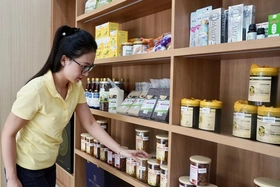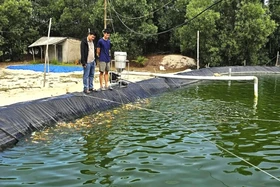4bqqVeG6vOG6uOG7kOG7sEghIeG6osOJO8O6w5oo4buw4buUw4lCcylI4buuVOG6uMO6LsOa4bq44buU4buuM8OaIcOaVuG7riHhurjhu5QhKEjDlOG7sMOaIVXDmuG7rlThurjhu67hu5Q04bq4VC5WNChV4bq4O8Oa4buw4buwSC7hurjDmuG7ruG6uDThu5QhKOG7lC7hu67hurgu4buUVMOaVuG7ruG6qi9V4bq8QuG6qjvhurjhu5Dhu7BIISHhuqLDiTvDreG7lEjhu5LDiULDrOG7ruG6uC7hu5Thu5Dhu5Thu64o4bq4KMOa4bus4buUIcOC4bq4KFXhu5ThurjDlCkhKOG7sMOa4buuVOG6uEjhu5Aow5ozw5oow5rhu5Qh4bq4VlPhurhUVlbhu5Ih4bq4w5rhu6w7Vi4o4bq4SOG7ruG7kuG6uOG7lDU7Vi4ow4Lhurjhu5QhO+G7lOG7kMOaSOG7sOG7sDbhurgoVeG7lOG6uMOa4busO1YuKOG6uFZT4bq44buQVkjhu7DhurhTLlbhu6zhurhuSFYh4bq4KFbhurh4w5rhu5Qo4buuSOG7rOG6uChVLlYpVFXhurgoVeG7lOG6uG5I4bq4bkg24bq4w6zhu64o4buULuG7rkgow5pW4buuSOG7sOG6uGRWLuG7kuG7lC7hurhpSCjhu5TDguG6uFVIM+G7lOG6uMOU4buU4buU4buu4bq4M8Oaw5QuSOG7rijhuqThurjDsynhu6zhu5QuVikh4bq4w5rhu65TLkghKC4p4buQKCku4buU4bq4Oy5W4buo4buU4buQKCHhurjhu5BW4buu4buu4buU4buQKMOa4buuVOG6uChV4buU4bq4bkjhurhuSDbhurjDrOG7rijhu5Qu4buuSCjDmlbhu65I4buw4bq4ZFYu4buS4buULuG6uGlIKOG7lOG6uDTDmihV4bq4KFXhu5Thurh1VikoVeG7lEghKOG6uHMpSOG7rlThurjDui7DmuG6uOG6ueG7kFbhu65W4busw5rhu5DhurhaVuG7ruG7lOG6uEgu4buU4bq4KeG7ruG7kuG7lC7hurghKCnhu5I2w4Lhurg7LlY7ViHhu5Thu5LDguG6uEjhu67hu5LhurjDmuG7ruG6uDsu4buUO0guSCjDmlbhu67hurhTVi7hurjDmuG7rDvhu7Dhu5Thu6zhu5Thu64oSCjDmlbhu67huqThurjDoFQu4buU4buU4bus4buU4buuKCHhurhW4buu4bq44buQVlY74buULkgow5pW4buu4bq4w5Thu5QoNOG7lOG7lOG7ruG6uHMpSOG7rlThurjDui7DmuG6uDsuVjPDmuG7ruG7kOG7lOG6uEjhu67hu5Lhurjhu67hu5TDmlRVw5RWLsOa4buuVOG6uDsuVjPDmuG7ruG7kOG7lCHhurjDmuG7ruG6uG5IViHhurhI4buu4buS4bq4w7pVSMOa4buwSOG7ruG7kuG6uFVIM+G7lOG6uMOU4buU4buU4buu4bq4IcOaVOG7ruG7lOG7ksOC4bq4Vjvhu5Thu67DmuG7rlThurgpO+G6uDsuViE74buU4buQKCHhurhTVi7hurgoVeG7lOG6uOG7lOG7rOG7lC5U4buU4buu4buQ4buU4bq4VlPhurhI4bq44buSNuG7rkjhu6zDmuG7kOG6uOG7lOG7kFbhu65W4busw5rhu5Dhurjhu5Lhu5Qz4buU4buwVjvhu6zhu5Thu64o4bq4elbhu67hu5ThurjDmuG7ruG6uChV4buU4bq4NOG7lCEo4buULuG7ruG6uDtILijhurhWU+G6uHMpSOG7rlThurjDui7DmuG6pOG6qi87QuG6qjvhurjhu5Dhu7BIISHhuqLDiTvDrOG7rijhu5Quw7rDmijhu7Dhu5TDiUJzKUjhu7DDmig24bq4w5rhu65TLkghKC4p4buQKCku4buU4bq4KFbhurjDlFZWISjhurjhu5Thu5BW4buuVuG7rMOa4buQ4bq4VC5WNChV4bqqLztC4bqqO+G6uOG7kOG7sEghIeG6osOJO2RW4buSNsOJQsOgLi7DmjPDmuG7rlThurhIKOG6uChV4buU4bq4bkjhurhuSDbhurjDrOG7rijhu5Qu4buuSCjDmlbhu65I4buw4bq4ZFYu4buS4buULuG6uGlIKOG7lOG6uEgu4buUSOG6uMOa4buu4bq44buwSCjhu5ThurhsSOG7rilILjbhurjDiuG6usOK4buAw4LhurhW4buu4buU4bq4w5Thu5Thu5BW4bus4buUIeG6uEg0SC7hu5ThurhWU+G6uChV4buU4bq44buSw5pTU8Oa4buQKeG7sCjDmuG7lCHhurhI4buu4buS4bq44buQVUjhu7Dhu7Dhu5Thu65U4buUIeG6uFNI4buQ4buU4buS4bq4w5Q24bq44buQSC5UVuG6uCguSOG7riE7Vi4o4bq44buSLsOaM+G7lC4h4bq44buU4buuVEhU4buU4buS4bq4w5rhu67hurjDmuG7rDtWLijhurhI4buu4buS4bq44buUNTtWLijhurhI4buQKMOaM8OaKMOa4buUIcOC4bq4O0guKMOa4buQKeG7sEgu4buwNuG6uChVViHhu5ThurgoLkjhu64hO1YuKMOa4buuVOG6uOG7kFZI4buw4bq4Uy5W4bus4bq4bkhWIeG6uChW4bq4eMOa4buUKOG7rkjhu6zhuqThurjDulXhu5ThurhIOzsuVjXDmuG7rEgo4buU4buwNuG6uOG6vOG6uuG6uOG7quG7rOG6uCEoLuG7lCjhu5BV4bq4VlPhurjDs0gow5pW4buuSOG7sOG6uMOtw5pUVTRINuG6uOG6vOG7huG6uFMuVuG7rOG6uMOtVuG6uMSRVcOa4bq4b8Oa4buuVeG6uHRWSOG7kuG6uChW4bq4KFXhu5ThurhuSOG6uG5INuG6uMOs4buuKOG7lC7hu65IKMOaVuG7rkjhu7DhurhkVi7hu5Lhu5Qu4bq4aUgo4buU4bq44buU4buu4buQVuG7rDtIISHhu5Qh4bq4NMOa4buu4buSw5rhu65U4bq44busVinhu64oSMOa4buuVikh4bq4IeG7lOG7kCjDmlbhu64hw4Lhurjhu65ILi5WNOG6uC5WSOG7kjRINiHhurg0w5ooVeG6uFbhu67hu5Thurghw5rhu5Lhu5ThurhIVEjDmuG7riEo4bq4KFXhu5Thurjhu6xWKeG7rihIw5rhu67hurhI4buu4buS4bq4KFXhu5ThurhWKFXhu5Qu4bq4VjPhu5Qu4buwVlbhu6rDmuG7rlThurjhu5Lhu5Thu5Q74bq4M0jhu7Dhu7Dhu5Q2IcOC4bq4SOG7ruG7kuG6uCHhu5Qz4buULkjhu7DhurjDmuG7ruG7kFbhu6w74buw4buUKOG7lOG6uOG7kFbhu64hKC4p4buQKMOaVuG7ruG6uCHDmijhu5Qh4bqk4bq4w6Ao4bq4KFXhu5ThurjDlFYu4buS4buULuG6uEgu4buUSMOC4bq4KFXhu5ThurjDmuG7rlMuSCEoLinhu5AoKS7hu5ThurjDmiHhurjhu5AuSOG7rDvhu5Thu5LDguG6uDTDmihV4bq44busSOG7rjbhurjhu5BW4buuISguKeG7kCjDmlbhu67hurg7Llbhu6jhu5Thu5AoIeG6uDbhu5Qo4bq4KFbhurjDlOG7lOG6uOG7kFbhu6w74buw4buUKOG7lOG7ksOC4bq44buUNUjhu5Dhu5Quw5RIKMOa4buuVOG6uChV4buU4bq4IcOaKClIKMOaVuG7ruG6uDTDmihV4bq44buQVkjhu7DhurhI4buu4buS4bq44buSKSEo4bq4VUh64buU4bq4KeG7ruG7kuG7lC7hurgoVeG7lOG6uCEp4buu4bq4SOG7ruG7kuG6uOG7rCnhu5Lhu5I24bq44buQVuG7ruG7ksOaKMOaVuG7riHhurjhu5IpLsOa4buuVOG6uC5Iw5rhu65TSOG7sOG7sOG6pOG6qi87QuG6qjvhurjhu5Dhu7BIISHhuqLDiTtkVuG7kjbDiULhuqrDmuG7rFThurjhu5Dhu7BIISHhuqLDicOaxJHhu5Thu64o4buULsOJ4bq4IS7hu5DhuqLDiVUoKDsh4bqyLy/hu5DhuqTDlEhWLClI4buuVCguw5rhuqQz4buuL+G7kuG7lCHhu6ooVjsv4buu4buUNCEvw4rhu4Dhurrhu4Yv4bq84bq84buA4buS4buAw4rhurrhurzhurrhurrhu4AoRuG6vkfhu7Dhur4t4buw4buULSguKVbhu65ULeG6vOG6pDThu5TDlDvDieG6uEjhu7Ao4bqiw4lzKUjhu65U4bq4w7ouw5rhurjhu5Thu64zw5ohw5pW4buuIeG6uOG7lCEoSMOU4buww5ohVcOa4buuVOG6uOG7ruG7lDThurhULlY0KFXhurg7w5rhu7Dhu7BILuG6uMOa4buu4bq4NOG7lCEo4buULuG7ruG6uC7hu5RUw5pW4buuw4nhurgvQuG6qi87QuG6qjvhurjhu5Dhu7BIISHhuqLDiTvEkUg7KMOaVuG7rsOJQsO6VeG7lOG6uG5I4bq4bkg24bq4w6zhu64o4buULuG7rkgow5pW4buuSOG7sOG6uGRWLuG7kuG7lC7hurhpSCjhu5Thurjhu67hu5Thu5Thu5Ih4bq4w5rhu64z4buUISjhu6zhu5Thu64o4bq4KFbhurjhu6zhu5Thu5Qo4bq4VC5WNMOa4buuVOG6uCguSOG7ksOa4buuVOG6uEjhu5Aow5ozw5oow5rhu5Qh4bqk4bq4clVWKFbhurLhurhu4buU4bq4w7ouKVbhu65U4bqqLztC4bqqO+G6uOG7kOG7sEghIeG6osOJO2RW4buSNsOJQsO6VcOaIeG6uC7hu5RI4buww5ooNuG6uDtWIeG7lCHhurjhu64p4bus4buULlYpIeG6uOG7kFVI4buw4buw4buU4buuVOG7lCHhurgoVuG6uChV4buU4bq4IeG7rFZWKFXhurhT4buwVjThurhWU+G6uFRWVuG7kiHhurgoLkjhu64hO1YuKOG6uMOU4buUKDThu5Thu5Thu67hurhuSFYh4bq4SOG7ruG7kuG6uHjDmuG7lCjhu65I4busw4Lhurjhu7Dhu5RI4buSw5rhu65U4bq4KFbhurg7Llbhu7BW4buuVOG7lOG7kuG6uCguSFNTw5rhu5Dhurjhu5BW4buuVOG7lCEow5pW4buu4bq44buSKeG7lOG6uChW4bq4KFXhu5ThurjDmuG7ruG7kC7hu5RIIeG7lOG7kuG6uOG7rFYz4buU4bus4buU4buuKOG6uFZT4bq4VeG7lEgzNuG6uCguKeG7kOG7qiHhurhI4buu4buS4bq44buQVuG7rihIw5rhu67hu5QuIeG6uFYu4bq4VuG7kOG7kEghw5pW4buuSOG7sOG6uMOULuG7lEjhu6rhu5JWNOG7riHhuqThuqovO0Lhuqo74bq44buQ4buwSCEh4bqiw4k7ZFbhu5I2w4lCb0jhu6424bq4w5QpIcOa4buu4buUISHhurhWNOG7ruG7lC4h4bq44buUNTsu4buUISHhurjhu5BW4buu4buQ4buULuG7riHDguG6uCEoSCjDmuG7rlThurgoVUgo4bq4KFXhu5ThurghKcOUO0gu4bq4SOG7ruG7kuG6uDtWVi7hu7A24bq4w5rhu64o4buULuG7kFbhu67hu67hu5Thu5Ao4buU4buS4bq4w5rhu65TLkghKC4p4buQKCku4buU4bq4SCjhurgoVeG7lOG6uMOUVi7hu5Lhu5Qu4bq4SC7hu5RIw4Lhurjhu5BW4busw5TDmuG7ruG7lOG7kuG6uDTDmihV4bq44buSw5pTU8Oa4buQKeG7sCjDmuG7lCHhurjDmuG7ruG6uOG7kFbhu67hu67hu5Thu5Aow5rhu65U4bq4KFbhurhWKFXhu5Qu4bq4M8OaKEjhu7DhurgoLkjhu64hO1YuKOG6uEguKOG7lC7DmuG7lCHDguG6uOG7rlYo4bq4VuG7ruG7sDbhurg7Llbhu7BW4buuVCHhurgoLkgz4buU4buw4bq4KMOa4bus4buUIeG6uEjhu67hu5Lhurjhu5LDmiEoSOG7ruG7kOG7lCHhurjDlCko4bq4SOG7sCFW4bq4LuG7lCEp4buwKCHhurjDmuG7ruG6uEjhurghVUguO+G6uMOa4buu4buQLuG7lEgh4buU4bq4w5rhu67hurjhu5BWISghw4Lhurjhu5BW4busOy5W4busw5oh4buUIeG6uChV4buU4bq4LClI4buww5ooNuG6uFZT4bq4VFZW4buSIcOC4bq4SOG7ruG7kuG6uOG7kEgpIeG7lCHhurjhu5JI4busSFThu5ThuqThurjDulXDmiHhurghw5ooKUgow5pW4buu4bq4UykuKFXhu5Qu4bq44buSw5oh4buQVikuSFThu5Qh4bq4w5QpIcOa4buu4buUISHhu5Qh4bq4Uy5W4bus4bq44buQVVZWIcOa4buuVOG6uChV4buU4bq4bkjhurhuSDbhurjDrOG7rijhu5Qu4buuSCjDmlbhu65I4buw4bq4ZFYu4buS4buULuG6uGlIKOG7lOG6uFNWLuG6uMOa4busO1YuKOG6uEjhu67hu5Lhurjhu5Q1O1YuKOG6uEjhu5Aow5ozw5oow5rhu5Qh4bq4Vi7hurjhu5Q1O0jhu67hu5LDmuG7rlThurgoVeG7lMOaLuG6uMOa4buuM+G7lCEo4bus4buU4buuKOG6uOG7lOG7ruG7kuG7lEgzVi4h4bqk4bqqLztC4bqqO+G6uOG7kOG7sEghIeG6osOJO2RW4buSNsOJQsOs4buuU1Yu4busSCjDmlbhu67hurhTLlbhu6zhurgoVeG7lOG6uG5I4bq4bkg24bq4w6zhu64o4buULuG7rkgow5pW4buuSOG7sOG6uGRWLuG7kuG7lC7hurhpSCjhu5ThurjEkSkhKFbhu6wh4bq4ZeG7lDtILijhu6zhu5Thu64ow4LhurhzKUjhu65U4bq4w7ouw5rhurjEkSkhKFbhu6wh4bq4ZeG7lDtILijhu6zhu5Thu64ow4Lhurgu4buUM+G7lEjhu7Ah4bq4KFVIKOG6uMOa4buu4bq4w4rhurrDiuG6vsOC4bq4KFXhu5ThurgoVihI4buw4bq4w5rhu6w7Vi4oLeG7lDU7Vi4o4bq4KCku4buuVjPhu5Qu4bq4VlPhurhUVlbhu5Ih4bq4KFUuVilUVeG6uChVw5oh4bq4VEgo4buUNEg24bq4LuG7lEjhu5BV4buU4buS4bq4w7l1w4PDiuG7guG6vOG6uOG7rMOa4buw4buww5pW4buuw4Lhurjhu5BW4buuKC7DmsOUKSjDmuG7rlThurhI4bq4KFYoSOG7sOG6uCEoSCjhu5ThurjDlCnhu5JU4buUKOG6uC7hu5Qz4buU4buuKeG7lOG6uFZT4bq4eMOzZeG7huG7hOG7gOG6pOG7guG6uMOUw5rhu7Dhu7DDmlbhu67hurjhuqzDg8OK4bq+4bqk4buG4bq44busw5rhu7Dhu7DDmlbhu67huqjhuqThurjDulXhu5Qh4buU4bq4U8OaVCku4buUIeG6uC7hu5Q7LuG7lCHhu5Thu64o4bq4SOG6uCHDmlThu67DmlPDmuG7kEjhu64o4bq4w5rhu67hu5Au4buUSCHhu5ThurhWU+G6uOG6vOG6vuG7gOG6vOG6pOG7gsSC4bq4SOG7ruG7kuG6uOG6vEZGxILhurjhu5BW4busO0gu4buU4buS4bq4KFbhurjDiuG6usOKw4rDguG6uC7hu5QhO+G7lOG7kCjDmjPhu5Thu7A24bqk4bq4w7NWKEjDlOG7sDbDguG6uChV4buU4bq4IShIKOG7lOG6uMOUKeG7klThu5Qo4bq4LuG7lDPhu5Thu64p4buU4bq4Uy5W4bus4bq44buQVkjhu7DhurjDmuG7rDtWLigh4bq44buUNeG7kOG7lOG7lOG7kuG7lOG7kuG6uHjDs2Xhu4bhurrhurrhurjDlMOa4buw4buww5pW4buu4bq44bqsw4PDiuG6uuG6pOG7huG6uOG7rMOa4buw4buww5pW4buu4bqo4bqk4bqqLztC4bqqO+G6uOG7kOG7sEghIeG6osOJO2RW4buSNsOJQsOJw7pV4buU4bq4LuG7lEjhu7DDmig24bq4SCjhurgoVeG7lOG6uMOUVi7hu5Lhu5Qu4bq44buQLlYhIcOa4buuVOG6uMOa4buu4buSw5rhu5BIKOG7lCHhurgoVUgo4bq4NMOaKFXhurjDlOG7lCgo4buULuG6uMOa4buuUy5IISguKeG7kCgpLuG7lOG6uEjhu67hu5Lhurjhu6xWLuG7lOG6uOG7kFbhu64z4buU4buuw5rhu5Thu64o4bq44buQVuG7ruG7ruG7lOG7kCjDmlbhu64h4bq4KFbhurgoLkjhu64hO1YuKEgow5pW4buu4bq4LlYpKOG7lCHhurjhu7Dhu5RI4buSw5rhu65U4bq4KFbhurg7Vi4oIcOC4bq4KFXhu5ThurgzVuG7sCnhu6zhu5ThurhWU+G6uMOa4busO1YuKOG7lOG7kuG6uOG7kFZI4buw4bq4NMOa4buw4buw4bq44buuVijhurhW4buu4buwNuG6uC7hu5Thu6xIw5rhu67hurhIKOG6uChV4buU4bq4SDPhu5QuSFThu5ThurhWU+G6uEjDlFYpKOG6uOG7gsOC4buA4bq64bq64bq4KFbhu64h4bq4O+G7lC7hurjhu5JINuG6uMOUKSjhurg0w5rhu7Dhu7DhurjDmuG7ruG7kC7hu5RIIeG7lOG6uCHDmlThu67DmlPDmuG7kEjhu64o4buwNuG6pOG6uMO6VcOaIeG6uEg7O+G7sMOa4buUIeG6uOG7rlYo4bq4VuG7ruG7sDbhurgoVuG6uOG7kFZI4buw4bq4w5QpKOG6uEjhu7AhVuG6uChW4bq4KFXhu5ThurjDmuG7rDtWLijhurhI4buu4buS4bq44buUNTtWLijhurhWU+G6uFYoVeG7lC7hurhUVlbhu5Ihw4LDieG6uCFVSC7hu5Thu5Lhurhu4buU4bq4xJFI4bus4bq4w6Dhu67DguG6uGXhu5Q7KSg24bq4w63hu5RI4buS4bq4VlPhurgoVeG7lOG6uG5I4bq4bkg24bq4w6zhu64o4buULuG7rkgow5pW4buuSOG7sOG6uGRWLuG7kuG7lC7hurhpSCjhu5ThurjEkSkhKFbhu6wh4bq4ZeG7lDtILijhu6zhu5Thu64o4bqk4bqqLztC4bqqO+G6uOG7kOG7sEghIeG6osOJO2RW4buSNsOJQsOtVkjhu65U4bq4w7pVw5rhurjEkSnhu5DDguG6uEjhurgu4buUOy7hu5Qh4buU4buuKEgow5oz4buU4bq4VlPhurjDulVW4buuVOG6uHJVSCjhurjDui5I4buSw5rhu65U4bq4SOG7ruG7kuG6uHXhu5QuM8Oa4buQ4buUIeG6uMSRVuG6pMOC4bq4bijhu5LhuqTDguG6uC7hu5Thu6xILuG7quG7lOG7ksOC4bq4w4nDsiku4bq44buQVuG7rDtI4buuNuG6uOG7lOG7ruG7kFYp4buuKOG7lC4h4bq44buuKeG7rOG7lC5WKSHhurjhu5BVSOG7sOG7sOG7lOG7rlThu5Qh4bq4SOG7ruG7kuG6uOG7sMOa4busw5ooSCjDmlbhu64h4bq4w5rhu67hurgoVeG7lOG6uDsuVuG7kOG7lCEh4bq4VlPhurjDmuG7rDtWLijDmuG7rlThurhI4buu4buS4bq44buUNTtWLijDmuG7rlThurhUVlbhu5Ihw4Lhurg7SC4ow5rhu5Ap4buwSC7hu7A24bq4w5rhu67hurgo4buULuG7rCHhurhWU+G6uDNW4buwKeG7rOG7lMOC4bq44buSKeG7lOG6uChW4bq4KFXhu5Thurjhu5BW4buuISguSMOa4buu4buU4buS4bq4w5rhu65TLkghKC4p4buQKCku4buU4bq44buQVuG7ruG7ksOaKMOaVuG7riHhurhIKOG6uChV4buU4bq4bkjhurhuSDbhurjDrOG7rijhu5Qu4buuSCjDmlbhu65I4buw4bq4ZFYu4buS4buULuG6uGlIKOG7lMOC4bq4NFXDmuG7kFXhurhVSCHhurjhu65WKOG6uC7hu5Thu5Dhu5TDmjPhu5Thu5Lhurjhu5BW4busOy7hu5RV4buU4buuIcOaM+G7lOG6uMOa4buuM+G7lCEo4bus4buU4buuKOG6pOG6uGlWVuG7kiHhurhTLlbhu6zhurhuSFYh4bq4VlMo4buU4buu4bq4VOG7lCjhurghKCnhu5Dhu6rhurjhu5Ip4buU4bq4KFbhurguVkjhu5Lhurjhu5BW4buuVOG7lCEow5pW4buuw4LhurjDmuG7rDtI4buQKMOa4buuVOG6uFYpLuG6uEjDlMOa4buww5ooNuG6uChW4bq4Uynhu7BTw5rhu7Dhu7Dhurjhu5BW4buuKC5I4buQKCHhurg0w5ooVeG6uDtILijhu67hu5QuIeG6pMOJ4bqqLztC4bqqO+G6uOG7kOG7sEghIeG6osOJO2RW4buSNsOJQuG6qsOa4busVOG6uOG7kOG7sEghIeG6osOJw5rEkeG7lOG7rijhu5Quw4nhurghLuG7kOG6osOJVSgoOyHhurIvL+G7kOG6pMOUSFYsKUjhu65UKC7DmuG6pDPhu64v4buS4buUIeG7qihWOy/hu67hu5Q0IS/DiuG7gOG6uuG7hi/hurzhurrhu4Lhu5Lhu4bhurrhu4LDiuG7guG7huG7hijhu4DhurrDiuG7sOG6vOG6ui1VSMOa4bqkNOG7lMOUO8OJ4bq4SOG7sCjhuqLDiXMpSOG7rlThurjDui7DmuG6uOG7lOG7rjPDmiHDmlbhu64h4bq44buUIShIw5Thu7DDmiFVw5rhu65U4bq44buu4buUNOG6uFQuVjQoVeG6uDvDmuG7sOG7sEgu4bq4w5rhu67hurg04buUISjhu5Qu4buu4bq4LuG7lFTDmlbhu67DieG6uC9C4bqqLztC4bqqO+G6uOG7kOG7sEghIeG6osOJO8SRSDsow5pW4buuw4lCxJEpIShW4bus4bq44buQ4buw4buUSC5I4buu4buQ4buU4bq4Oy5W4buQ4buUISHhurhIKOG6uChV4buU4bq4bkjhurhuSDbhurjDrOG7rijhu5Qu4buuSCjDmlbhu65I4buw4bq4ZFYu4buS4buULuG6uGlIKOG7lOG6pOG6uHJVVihW4bqy4bq4w6Dhu65V4bq4cylI4buu4bqqLztC4bqqO+G6uOG7kOG7sEghIeG6osOJO8Os4buuKOG7lC7DusOaKOG7sOG7lMOJQsOyO+G7lOG7rsOa4buuVOG6uOG7ruG7lDThurjhu5LDmi7hu5Thu5Aow5pW4buu4bq4U1Yu4bq44buS4buUM+G7lOG7sFY74bus4buU4buuKOG6qi87QuG6qjvhurjhu5Dhu7BIISHhuqLDiTtkVuG7kjbDiULDulbhurhINEjhu6rhu5Thu67hurgoVeG7lOG6uDtWKOG7lOG7rijDmkjhu7DhurhI4buu4buS4bq4Oy5W4busVijhu5ThurgoVeG7lOG6uOG7lOG7kFbhu65W4busw5rhu5Dhurjhu5Lhu5Qz4buU4buwVjvhu6zhu5Thu64o4bq4VlPhurgoVeG7lOG6uG5I4bq4bkg24bq4w6zhu64o4buULuG7rkgow5pW4buuSOG7sOG6uGRWLuG7kuG7lC7hurhpSCjhu5ThurhILuG7lEjDguG6uChV4buU4bq4Oy5WM8Oa4buu4buQ4buU4bq4VUgh4bq4w5rhu6w74buw4buU4bus4buU4buuKOG7lOG7kuG6uDNILsOaVikh4bq44buSw5ou4buU4buQKMOaVuG7riHhurhI4buu4buS4bq4IVbhu7ApKMOaVuG7riHDguG6uDTDmihV4bq4w5QpIcOa4buu4buUISHhu5Qh4bq4SOG7kCjDmjPhu5Thu7A24bq4w5rhu64z4buUISjDmuG7rlThuqThuqovO0Lhuqo74bq44buQ4buwSCEh4bqiw4k7ZFbhu5I2w4lCw6zhu67hurhI4buS4buSw5oow5pW4buu4bq4KFbhurjhu6xWw5TDmuG7sMOaesOa4buuVOG6uCHDmlThu67DmlPDmuG7kEjhu64o4bq4w5rhu64z4buUISjhu6zhu5Thu64o4bq4LuG7lCFWKS7hu5Dhu5Qh4bq4U1Yu4bq4KFXhu5ThurjDmuG7rlMuSCEoLinhu5AoKS7hu5ThurhWU+G6uChV4buU4bq4bkjhurhuSDbhurjDrOG7rijhu5Qu4buuSCjDmlbhu65I4buw4bq4ZFYu4buS4buULuG6uGlIKOG7lOG6uEgu4buUSMOC4bq4KFXhu5Thurg7LlYzw5rhu67hu5DDmkjhu7DhurhIKShVVi7DmijDmuG7lCHhurhVSDPhu5Thurjhu5LDmi7hu5Thu5Ao4buU4buS4bq4LuG7lOG7sOG7lDNI4buuKOG6uOG7kuG7lDtILijhu6zhu5Thu64oIeG6uEjhu67hu5Lhurjhu7BW4buQSOG7sMOaKMOa4buUIeG6uChW4bq4KS5U4buU4buuKOG7sDbhurjhu5Lhu5Qz4buU4buwVjvhurgoVeG7lOG6uOG6ueG7kFbhu65W4busw5rhu5Dhurhl4buUM+G7lOG7sFY74bus4buU4buuKOG6uHLhu7BI4buu4bq4U1Yu4bq4KFXhu5ThurhuSOG6uG5INuG6uMOs4buuKOG7lC7hu65IKMOaVuG7rkjhu7DhurhkVi7hu5Lhu5Qu4bq4aUgo4buU4bq4SC7hu5RI4bq4KeG7rijDmuG7sOG6uMOK4bq64bq+4bq6w4Lhurg0w5ooVeG6uEjhurgzw5ohw5pW4buu4bq4KFY0SC7hu5Ih4bq4w4rhurrhur7hu4bDguG6uMOUSCHhu5Thu5LhurhW4buu4bq44buUNcOaISjDmuG7rlThurg74buwSOG7ruG7rsOa4buuVOG6pOG6qi87QuG6qjvhurjhu5Dhu7BIISHhuqLDiTtkVuG7kjbDiULDulXhu5ThurhUVkjhu7DhurhWU+G6uChV4buU4bq4O+G7sEjhu67hurjDmiHhurgoVuG6uOG7lCEoSMOU4buww5ohVeG6uEjhurjhu67hu5Q04bq44buU4buQVuG7rlbhu6zDmuG7kOG6uOG7kFYuLsOa4buSVi7hurg7SC5I4buw4buw4buU4buw4bq4KFbhurgoVeG7lOG6uOG6uUghKC154buUISjhurjhurnhu5BW4buuVuG7rMOa4buQ4bq4xJFWLi7DmuG7klYuw4Lhurjhu5Au4buUSCjDmuG7rlThurhI4bq44buSNuG7rkjhu6zDmuG7kOG6uOG7sFZUw5ohKMOa4buQIeG6uCHhu5QuM8Oa4buQ4buU4bq44buQ4buU4buuKOG7lC7huqThurjDulXhu5ThurgoVihI4buw4bq44buQSDvDmihI4buw4bq44buu4buU4buU4buS4buU4buS4bq4KFbhurjDmuG7rDvhu7Dhu5Thu6zhu5Thu64o4bq4KFXhu5Thurg74buwSOG7rsOC4bq44buU4buuISkuw5rhu65U4bq4SOG7sMOaVOG7ruG7rOG7lOG7rijhurg0w5ooVeG6uOG7kuG7lDPhu5Thu7BWO+G7rOG7lOG7rijhurjhu5LDmi7hu5Thu5Aow5pW4buuIeG6uMOa4buu4bq4KC5I4buS4buUw4Lhurgh4buULjPDmuG7kOG7lCHDguG6uChWKS7DmiHhu6zDguG6uEjhu67hu5LhurjDmuG7rlMuSCEoLinhu5AoKS7hu5TDguG6uMOaIeG6uEg7Oy5WNcOa4busSCjhu5Thu7A24bq4eMOzZeG6vuG6pOG6vOG7gOG6uCguw5rhu7Dhu7DDmlbhu67hurjhuqzDg+G6vMOKRuG6pOG7hOG6uOG7rMOa4buw4buww5pW4buu4bqo4bqk4bqqLztC4bqqO+G6uOG7kOG7sEghIeG6osOJO2RW4buSNsOJQsO6VeG7lCHhu5ThurghO+G7lOG7kMOaU8Oa4buQ4bq44buQVuG7ruG7ksOaKMOaVuG7riHhurhILuG7lOG6uCHhu5Qo4bq4KFbhurhTSOG7kMOa4buww5ooSCjhu5ThurgoVeG7lOG6uMOa4busO+G7sOG7lOG7rOG7lOG7rihIKMOaVuG7ruG6uFZT4bq4IeG7lDPhu5QuSOG7sOG6uOG7rFYow5ozSCjDmuG7rlThurg7Llbhu6jhu5Thu5AoIcOC4bq4VOG7lOG7ruG7lC5IKMOa4buuVOG6uOG7ruG7lDThurjhu6xW4bus4buU4buuKCnhu6zhurhI4buu4buS4bq4Oy5WO+G7lOG7sOG7sMOa4buuVOG6uChV4buU4bq4Oy5WM8Oa4buu4buQ4buU4bq4w5rhu64oVuG6uEjhurjDlC7hu5RI4buqKFUuVilUVeG6uOG7kuG7lDPhu5Thu7BWO+G7rOG7lOG7rijhurg7VUgh4buU4bq44buSKS7DmuG7rlThurgoVeG7lOG6uDsuVuG7kOG7lCEh4bq4VlPhurjDmuG7rijhu5Qu4buuSCjDmlbhu65I4buw4bq44buU4buQVuG7rlbhu6zDmuG7kOG6uMOa4buuKOG7lFQuSCjDmlbhu67huqThuqovO0Lhuqo74bq44buQ4buwSCEh4bqiw4k7ZFbhu5I2w4lCw6zhu67hurhsKeG7ruG7lOG6uMOK4bq6w4rhur7DguG6uEjhu67hurjDmuG7rjPhu5QhKFYu4bq44buQVuG7riFWLijDminhu6zhurg7LlY7ViHhu5Thu5LhurhI4bq4LuG7lCHhu5RILuG7kFXhurhI4buu4buS4bq4w5rhu64z4buUISjhu6zhu5Thu64o4bq4O+G7sEjhu67hurhTVi7hurgoLkjhu64hO1YuKMOa4buuVOG6uOG7kFZI4buw4bq4Uy5W4bus4bq4KFXhu5ThurhtSOG7sOG7lCnhu6zhurjhu6zDmuG7ruG7lOG6uMOa4buu4bq4deG7lOG7qlbhu65U4bq4Oy5WM8Oa4buu4buQ4buUw4LhurhuSFYhw4LhurgoVuG6uChV4buU4bq4bzbhurjDulUpNuG6uDtWLijhurgzw5pI4bq4KFXhu5ThurhuSOG6uG5INuG6uMOs4buuKOG7lC7hu65IKMOaVuG7rkjhu7DhurhkVi7hu5Lhu5Qu4bq4aUgo4buU4bq4KSHDmuG7rlThurhI4bq44buQVuG7rjPhu5Q2Vi7hurjDlOG7lOG7sCjhurg0w5ooVeG6uEjhurgoVihI4buw4bq44buw4buU4buuVChV4bq4VlPhurjhurzhu4Lhurrhurjhu6rhu6zhuqThurjDulXhu5Thurg7Llbhu6jhu5Thu5Ao4bq44buQVuG7rDsuw5oh4buUIeG6uChVLuG7lOG7lOG6uOG7kFbhu6w7VuG7ruG7lOG7righ4bqy4bq4SOG6uOG7kFbhu64z4buUNlYu4bq4w5Thu5Thu7Ao4bq4ITYhKOG7lOG7rOG6uDTDmihVw5rhu67hurhuSFYh4bq4NMOaKFXhurhI4bq44buw4buU4buuVChV4bq4VlPhurhG4buG4bq44buq4busw4LhurhI4bq44buQVuG7rjPhu5Q2Vi7hurjDlOG7lOG7sCjhurghNiEo4buU4bus4bq44buQLlYhIcOa4buuVOG6uChV4buU4bq4eMOa4buUKOG7rkjhu6wtbkhWIeG6uMOUVi7hu5Lhu5Qu4bq4NMOaKFXhurhI4bq44buw4buU4buuVChV4bq4VlPhurhIOzsuVjXDmuG7rEgo4buU4buwNuG6uOG7huG6uOG7quG7rMOC4bq4SOG7ruG7kuG6uEjhurjhu5BW4buuM+G7lDZWLuG6uMOU4buU4buwKOG6uCE2ISjhu5Thu6zhurhTLlbhu6zhurjhu6rDmuG7sFbhu6zhu5Qo4buULuG6uOG7gCvDiuG6uuG6uuG6uFZT4bq4w7NIKMOaVuG7rkjhu7DhurjDrcOaVFU0SDbhurjhurzhu4bhurgoVuG6uChV4buU4bq4bzbhurjDulUpNuG6uDtWLijDguG6uCE7SOG7ruG7rsOa4buuVOG6uOG7hOG6uuG6uOG7quG7rOG6pOG6qi87QuG6qihIw5Thu7Dhu5ThurghKDbhu7Dhu5ThuqLDieG7rEguVMOa4buu4bqy4bq4w4o7NeG6uEgpKFbhurTDiULhuqoow5RW4buSNkLhuqooLkLhuqoo4buSQuG6qjvhurjhu5Dhu7BIISHhuqLDiTtkVuG7kjbDiULDulXhu5ThurhuSOG6uG5INuG6uMOs4buuKOG7lC7hu65IKMOaVuG7rkjhu7DhurhkVi7hu5Lhu5Qu4bq4aUgo4buU4bq4VVbhu7Dhu5Ih4bq4SOG6uCEoLkgo4buUVMOa4buQSOG7sOG7sDbhurhI4buSM0jhu64oSFThu5RWKSHhurg7ViHDmijDmlbhu67hurhTVi7hurhTViEo4buULsOa4buuVOG6uMOa4buuKOG7lC7hu65IKMOaVuG7rkjhu7Dhurgu4buU4buwSCjDmlbhu64hw4LhurgoLkjhu5Lhu5TDguG6uCHhu5QuM8Oa4buQ4buUIcOC4bq4SOG7ruG7kuG6uChWKS7DmiHhu6zhuqThurjDrCjhurgh4buULjPhu5Qh4bq4SCHhurhI4bq4VEgo4buUNEg24bq44buQVuG7ruG7ruG7lOG7kCjDmuG7rlThurgoVeG7lOG6uMSR4buU4buuKC5I4buw4bq4Oy5WM8Oa4buu4buQ4buUIeG6uFZT4bq4eMOa4buUKOG7rkjhu6zhurg0w5ooVeG6uChV4buU4bq4dVYpKFXhu5Qu4buu4bq4Oy5WM8Oa4buu4buQ4buUIeG6uFZT4bq4bkhWIeG6uEjhu67hu5LhurgoVeG7lOG6uMOzVi4oVeG7lEghKOG7lC7hu67hurg7LlYzw5rhu67hu5Dhu5Qh4bq4VlPhurjDulVIw5rhu7BI4buu4buS4bqk4bq4w7pV4buU4bq44buQVi4uw5rhu5JWLuG6uDtIISHDmuG7rlThurgoVS5WKVRV4bq4KFXhu5ThurhuSOG6uG5INuG6uMOs4buuKOG7lC7hu65IKMOaVuG7rkjhu7DhurhkVi7hu5Lhu5Qu4bq4aUgo4buU4bq4w5oh4bq4NOG7lOG7sOG7sC07ViHDmijDmlbhu67hu5Thu5LhurgoVuG6uEgoKC5I4buQKOG6uCguSOG7riE7Vi4oSCjDmlbhu67hurgzVuG7sCnhu6zhu5Qh4bq4U1Yu4bq4KFXhu5Thurjhu5Q14buQVUjhu65U4buU4bq4VlPhurhUVlbhu5Ih4bq4Uy5W4bus4bq4KFXhu5ThurhTViku4bq4dVYpKFXhu5Qu4buu4bq4Oy5WM8Oa4buu4buQ4buUIeG6uFZT4bq4bkhWIcOC4bq4NMOaKFXhurhI4bq4O1Y7KeG7sEgow5pW4buu4bq4VlPhurhW4buu4buU4bq44busw5rhu7Dhu7DDmlbhu67hurg74buUVjvhu7Dhu5TDguG6uEjhu67hu5LhurgoVeG7lOG6uMOzVi4oVeG7lEghKOG7lC7hu67hurg7LlYzw5rhu67hu5Dhu5Qh4bq4VlPhurjDulVIw5rhu7BI4buu4buSw4Lhurg0w5ooVeG6uEjhurg7Vjsp4buwSCjDmlbhu67hurhWU+G6uEg7Oy5WNcOa4busSCjhu5Thu7A24bq4w4rhurzhuqThu4bhurjhu6zDmuG7sOG7sMOaVuG7ruG6uDvhu5RWO+G7sOG7lOG6pOG6qi87QuG6qjvhurjhu5Dhu7BIISHhuqLDiTtkVuG7kjbDiULDrOG7ruG6uChV4buU4bq44buu4buUSC7hurhTKSgpLuG7lMOC4bq4NMOaKFXhurgoVeG7lOG6uFY74buU4buuw5rhu65U4bq4VlPhurgoVeG7lOG6uOG7kFbhu67hu67hu5Thu5Aow5rhu65U4bq4LlYpKOG7lOG6uFMuVuG7rOG6uChV4buU4bq4bkjhurhuSDbhurjDrOG7rijhu5Qu4buuSCjDmlbhu65I4buw4bq4ZFYu4buS4buULuG6uGlIKOG7lOG6uChW4bq4KFXhu5Thurh1VikoVeG7lEghKOG6uHMpSOG7rlThurjDui7DmuG6uOG6ueG7kFbhu65W4busw5rhu5DhurhaVuG7ruG7lOG6uEjhu67hu5LhurgoVeG7lOG6uOG7kuG7lOG7lDstNEgo4buULuG6uCHhu5RIO1YuKOG6uFZT4bq4bzbhurjDulUpNsOC4bq44buUNSjhu5Thu67hu5LDmuG7rlThurhWM+G7lC7hurjhu4Thurrhurjhu6rhu6zhurjhuqw0VcOa4buQVeG6uFVIIeG6uMOU4buU4buU4buu4bq4w5rhu67hu5Dhu7Ap4buS4buU4buS4bq4w5rhu67hurgoVeG7lOG6uG/DmuG7rsOaISguNuG6uFZT4bq4w7ouSOG7riE7Vi4o4oCZIeG6uC5WSOG7kuG6uOG7kuG7lDPhu5Thu7BWO+G7rOG7lOG7rijhurg74buwSOG7ruG6uCk74bq4KFbhurjDiuG6usOK4bq6w4Lhurjhu5Thu64zw5ohw5pW4buuw5rhu65U4bq4KFY0SC7hu5Ih4bq4w4rhurrhur7hurrhuqjDguG6uHMpSOG7rlThurjDui7DmuG6uDTDmuG7sOG7sOG6uOG7lCEoSMOU4buww5ohVeG6uEjhurjhu67hu5Q04bq44buU4buQVuG7rlbhu6zDmuG7kOG6uOG7kFYuLsOa4buSVi7hurg7SC5I4buw4buw4buU4buw4bq4KFbhurgoVeG7lOG6uOG6uUghKC154buUISjhurjhurnhu5BW4buuVuG7rMOa4buQ4bq4xJFWLi7DmuG7klYu4bqk4bqqLztC4bqqLyjhu5JC4bqqLyguQuG6qi8ow5RW4buSNkLhuqovKEjDlOG7sOG7lELhuqo74bq44buQ4buwSCEh4bqiw4k7ZFbhu5I2w4lCw6Dhu6xW4buuVOG6uChV4buUIeG7lOG6uOG7kFbhu6w7VuG7ruG7lOG7righw4LhurgoVeG7lOG6uDsuVuG7qOG7lOG7kCjhurjDmuG7rjNW4buwM+G7lCHhurjDmuG7rjPhu5QhKMOa4buuVOG6uMOa4buu4bq4KFXhu5Thurjhu5BW4buuISguKeG7kCjDmlbhu67hurhWU+G6uEjhurghO+G7lOG7kMOaSOG7sMOaeuG7lOG7kuG6uDtWLijhurhI4buu4buS4bq44buQVuG7rjPhu5Q2Vi7hurjDlOG7lOG7sCjhurhTVi7hurgoLkjhu64hO1YuKMOa4buuVOG6uOG7kFZI4buw4bq4Uy5W4bus4bq4KFXhu5ThurhuSOG6uG5INuG6uMOs4buuKOG7lC7hu65IKMOaVuG7rkjhu7DhurhkVi7hu5Lhu5Qu4bq4aUgo4buU4bq4KFbhurgoVeG7lOG6uG824bq4w7pVKTbhurg7Vi4ow4Lhurjhu5BWM+G7lC7DmuG7rlThurhI4bq44buSw5ohKEjhu67hu5Dhu5ThurhWU+G6uOG7hOG6uuG6uOG7quG7rOG6pOG6uMO6VeG7lOG6uMOa4buuM+G7lCEoVi7hurg0w5rhu7Dhu7DhurjDlCnDmuG7sOG7kuG6uEjhurjhu5Lhu5Thu5LDmuG7kEgo4buU4buS4bq4w5Qp4buw4buq4bq44buQSC5UVuG6uDtWLijhurhI4buu4buS4bq4O1YuKOG6uMOa4buuUy5IISguKeG7kCgpLuG7lOG6uOG7kEg7SMOU4buw4buU4bq4VlPhurgu4buU4buQ4buUw5ozw5rhu65U4bq4IVXDmjsh4bq4KTvhurgoVuG6uOG7huG6usOC4bq64bq64bq64bq4ZXnDusOC4bq4NMOaKFXhurhI4buu4bq4SOG7ruG7rilI4buw4bq44buQSDtI4buQw5ooNuG6uFZT4bq44bq+4bq64bq44busw5rhu7Dhu7DDmlbhu67hurgoVuG7riHhuqThurjDulXhu5Thurjhu5BW4buuM+G7lDZWLuG6uMOU4buU4buwKOG6uDTDmuG7sOG7sOG6uMOU4buU4bq44buQVuG7riEoLinhu5Ao4buU4buS4bq44buU4buu4buQ4buwViHhu5Thu5LDguG6uFPhu7BWSCjDmuG7rlThurhW4buu4bq4w5Thu5RI4busIcOC4bq4VcOaVFXhurghKOG7lOG7lOG7sOG6uCguKSEh4buUIcOC4bq4VjPhu5QuO0ghIeG7lCHDguG6uFYu4bq44busVinhu64oSMOa4buu4bq4KCnhu67hu67hu5Thu7Ah4bqk4bq4w7pV4buU4bq4KFYoSOG7sOG6uMOa4buuM+G7lCEo4bus4buU4buuKOG6uFNWLuG6uChV4buU4bq4Oy5W4buo4buU4buQKOG6uMOaIeG6uEg7Oy5WNcOa4busSCjhu5Thu7A24bq4eMOzZeG7hOG6pOG7huG6uCguw5rhu7Dhu7DDmlbhu67hurjhuqzDg+G6vuG6uuG7hOG6pOG7gOG6uOG7rMOa4buw4buww5pW4buu4bqow4Lhurg0w5ooVeG6uMOa4busO+G7sOG7lOG7rOG7lOG7rihIKMOaVuG7ruG6uCHhu5BV4buU4buSKeG7sOG7lOG7kuG6uFMuVuG7rOG6uMOK4bq6w4rhur7hurgoVuG6uMOK4bq6w4rhu4LhuqThuqovO0Lhuqo74bq44buQ4buwSCEh4bqiw4k7ZFbhu5I2w4lCZEgh4buU4buS4bq4VuG7ruG6uChV4buU4bq4Oy5WM8Oa4buu4buQ4buU4oCZIeG6uDsuVjtWIUjhu7DDguG6uFbhu67hurhsSOG7rilILjbhurjhu4bDguG6uMOK4bq6w4rhu4DDguG6uChV4buU4bq4aVYz4buULuG7ruG7rOG7lOG7rijhurjDmiEhKeG7lOG7kuG6uEjhurgu4buUIVbhu7ApKMOaVuG7ruG6uEjhu7Dhu7BWNMOa4buuVOG6uChV4buU4bq4w5rhu6w74buw4buU4bus4buU4buuKEgow5pW4buu4bq4VlPhurgoVeG7lOG6uDsuVuG7qOG7lOG7kCjhurgoVuG6uMOUKcOa4buw4buS4bq4SOG6uOG7kFZI4buw4bq44buQVuG7rjPhu5Q2Vi7hurjDlOG7lOG7sCjhurghNiEo4buU4bus4bq4Uy5W4bus4bq4bkhWIeG6uChW4bq4eMOa4buUKOG7rkjhu6zhurjhu5AuViEhw5rhu65U4bq4KFXhu5ThurjDlFYu4buS4buULuG6uEgo4bq4KFXhu5ThurhuSOG6uG5INuG6uMOs4buuKOG7lC7hu65IKMOaVuG7rkjhu7DhurhkVi7hu5Lhu5Qu4bq4aUgo4buU4bq4w5rhu67hurg7VUgh4buU4bq4w4rhurhWU+G6uChV4buU4bq44buQVuG7rDsu4buUVeG7lOG7riHDmjPhu5Thurg7Llbhu6jhu5Thu5Ao4bq4U1Yu4bq4KC5I4buuITtWLijDmuG7rlThurjhu5BWSOG7sOG6uEjhu67hu5LhurjDlCnhu7Dhu6rhurjhu5BILlRW4bq4Uy5W4bus4bq4bkhWIeG6uChW4bq4eMOa4buUKOG7rkjhu6zhurg7LlY7ViHhu5Thu5LhurjDlDbhurjDs0jhu6zhurjDusOa4buU4buu4bq4xJFW4busO0jhu6424bqk4bqqLztC4bqqO+G6uOG7kOG7sEghIeG6osOJO2RW4buSNsOJQsO6VeG7lOG6uDsuVuG7qOG7lOG7kCjDguG6uDTDmihV4bq4SOG6uOG7sOG7lOG7rlQoVeG6uFZT4bq4SDs7LlY1w5rhu6xIKOG7lOG7sDbhurjhu4bhuqThu4bhurjhu6rhu6zDguG6uMOa4buuM1bhu7Az4buUIeG6uChV4buU4bq44buQVuG7rjPhu5Q2Vi7hurjDlOG7lOG7sCjhurgh4buU4buQKMOaVuG7ruG6uCHDmigpSCjhu5Thu5LhurhW4buu4bq4bkhWKMOaSOG7ruG6uCjhu5QuLsOaKFYuNuG6uFNWLuG6uEjDlFYpKOG6uMOK4bq64bq64bq44bus4bq4SOG7ruG7kuG6uFbhu67hurh4w5rhu5Qo4buuSOG7rOG7lCHhu5Thurgo4buULi7DmihWLjbhurhTVi7hurhIw5RWKSjhurjhu4bhuqThu4bhurjhu6rhu6zhuqThurjDrCgh4bq4OykuO1Yh4buU4bq4w5oh4bq4KFbhurgoLkjhu64hO1YuKOG6uOG7kFZI4buw4bq4Uy5W4bus4bq4KFXhu5ThurghKFYuSFThu5Thurg2SC7hu5LhurjDmuG7ruG6uHVI4buwSDNI4buu4bq4Oy5WM8Oa4buu4buQ4buUw4LhurhuSFYhw4LhurgoVS5WKVRV4bq4KFXhu5ThurhuSOG6uG5INuG6uMOs4buuKOG7lC7hu65IKMOaVuG7rkjhu7DhurhkVi7hu5Lhu5Qu4bq4aUgo4buU4bq4KFbhurgoVeG7lOG6uCEoVi5IVOG7lOG6uDZILuG7kuG6uMOa4buu4bq4w6DhurjDs1RW4bq44buQVuG7rOG7rCnhu67hu5TDguG6uGVI4buqLlbhu65U4bq44buSw5ohKC7DmuG7kCjhuqThurjDulXhu5ThurgoVihI4buw4bq4w5rhu64z4buUISjhu6zhu5Thu64o4bq4U1Yu4bq4KFXhu5Thurg7Llbhu6jhu5Thu5Ao4bq4w5oh4bq4SC5WKeG7ruG7kuG6uHjDs2XhurzhuqRG4buA4bq4KC7DmuG7sOG7sMOaVuG7ruG6uOG6rMOD4buE4buG4bqk4buA4bq44busw5rhu7Dhu7DDmlbhu67huqjDguG6uOG7ksOaM8Oa4buS4buU4buS4bq4w5rhu64oVuG6uCg0VuG6uDtVSCHhu5Qh4bq4KFbhurjhu5BW4buuISguKeG7kCjhurhI4bq44buQVuG7rjPhu5Q2Vi7hurjDlOG7lOG7sCjhurg0w5ooVeG6uEjhurgoVihI4buw4bq4KC5I4buuITtWLijhurjhu5BIO0jhu5DDmig24bq4VlPhurjhu4LDguG6uuG6uuG6uuG6uChW4buuIeG6uDvhu5Qu4bq4VVYpLuG6uEjhu67hu5LhurhI4buQ4buQVuG7rDtI4buuNsOa4buuVOG6uCEpOztWLijDmuG7rlThurhTSOG7kMOa4buww5oow5rhu5Qh4bqk4bqqLztC4bqqO+G6uOG7kOG7sEghIeG6osOJO2RW4buSNsOJQsO6Lkjhu67hurjDs0jhu6zhurhtVUjhu65Vw4LhurhI4bq4LuG7lDsu4buUIeG7lOG7rihIKMOaM+G7lOG6uFZT4bq4w61WSOG7rlXhurh1VuG7ruG6uGkuVik74bq4bFbDmuG7rijhurh1KFbhu5Dhu6rhurjEkVbhu6w7SOG7rjbDguG6uCEoSCjhu5Thu5LDguG6uMOJeVXhu5Thu67hurgoVeG7lOG6uOG7kFbhu64z4buUNlYu4bq4w5Thu5Thu7Ao4bq4Oy5W4buo4buU4buQKOG6uFNWLuG6uOG7kFZI4buw4bq4KC5I4buuITtWLijhurjDlOG7lOG7kFbhu6zhu5Qh4bq4Vjvhu5QuSCjDmlbhu65I4buw4bq4SOG7ruG7kuG6uMOa4buuUy5IISguKeG7kCgpLuG7lOG6uMOaIeG6uMOa4buuM+G7lCEo4buU4buSw4Lhurg0w5ooVeG6uMOU4buUKCjhu5Qu4bq44buQVuG7ruG7ruG7lOG7kCjDmjPDmig2w4LhurgoVeG7lOG6uDNW4buwKeG7rOG7lOG6uFZT4bq44buQVkjhu7DhurjDmuG7rDtWLijhu5Thu5LhurgoVS5WKVRV4bq4KFXhu5ThurhuSOG6uG5INuG6uMOs4buuKOG7lC7hu65IKMOaVuG7rkjhu7DhurhkVi7hu5Lhu5Qu4bq4aUgo4buU4bq4w5Q24bq4w5QpIcOa4buu4buUISHhu5Qh4bq4NMOa4buw4buw4bq4w5rhu67hu5Au4buUSCHhu5Thurjhu6xI4buuNuG6uCjDmuG7rOG7lCHhurjhu5BW4busO0gu4buU4buS4bq4KFbhurjDiuG6usOK4bq+4bqkw4nhuqovO0Lhuqo74bq44buQ4buwSCEh4bqiw4k7ZFbhu5I2w4lCw4nDrOG7ruG6uMOK4bq6w4rhur7DguG6uChV4buU4bq4w5rhu6w7Vi4o4buU4buS4bq44buQVkjhu7DhurhTLlbhu6zhurhuSFYh4bq4KFUuVilUVeG6uChV4buU4bq4w5RWLuG7kuG7lC7hurhUSCjhu5Thurg0SCHhurhWM+G7lC7hurjDiuG6pOG6vuG6vuG6uOG7rMOa4buw4buww5pW4buu4bq4KFbhu64h4bqk4bq4ci7hu5Thu7DDmuG7rMOa4buuSC424bq44buQSOG7sOG7kCnhu7BIKMOaVuG7riHhurghKVRU4buUISjhurgoVUgo4bq4NFXhu5Thu67hurjhu5BWSOG7sOG6uMOa4busO1YuKEgow5pW4buu4bq4Uy5W4bus4bq4bkhWIeG6uMOaIeG6uOG7kEguLsOa4buU4buS4bq4Viko4bq4KSHDmuG7rlThurgoVeG7lOG6uOG7kFbhu64z4buUNlYu4bq4w5Thu5Thu7Ao4bq4ITYhKOG7lOG7rMOC4bq4w5oo4bq4NMOa4buw4buw4bq4w5rhu67hu5Au4buUSCHhu5ThurgoVeG7lOG6uMOa4busO1YuKOG7lOG7kuG6uOG7kFZI4buw4bq4M1bhu7Ap4bus4buU4bq4w5Q24bq4SMOUViko4bq44bq84bq64bq4KMOa4bus4buUIeG6pOG6uMO6VcOaIeG6uDTDmuG7sOG7sOG6uOG7rlYo4bq4VuG7ruG7sDbhurhU4buU4buu4buULkgo4buU4bq4SOG6uCHDmlThu67DmlPDmuG7kEjhu64o4bq4LuG7lDPhu5Thu64p4buU4bq4IVYpLuG7kOG7lOG6uFNWLuG6uChV4buU4bq4IShIKOG7lOG6uMOUKeG7klThu5Qo4bq4w5QpKOG6uEjhu7AhVuG6uCEow5rhu6wp4buwSCjhu5ThurgoVeG7lOG6uCFW4buQw5pWLeG7lOG7kFbhu65W4busw5rhu5Dhurjhu5Lhu5Qz4buU4buwVjvhu6zhu5Thu64o4bq4VlPhurgoVeG7lOG6uMOUVi7hu5Lhu5Qu4bq4VEgo4buU4bq4SC7hu5RIw4LDieG6uCFIw5rhu5Lhurhu4buU4bq4xJFI4bus4bq4w6Dhu67huqThuqovO0Lhuqo74bq44buQ4buwSCEh4bqiw4k7ZFbhu5I2w4lC4bqqw5rhu6xU4bq44buQ4buwSCEh4bqiw4nDmsSR4buU4buuKOG7lC7DieG6uCEu4buQ4bqiw4lVKCg7IeG6si8v4buQ4bqkw5RIViwpSOG7rlQoLsOa4bqkM+G7ri/hu5Lhu5Qh4buqKFY7L+G7ruG7lDQhL8OK4buA4bq64buGL+G6vOG6uuG7guG7kuG7gMOK4bq64buG4buE4buA4bq+KEfhurzhu4bhu7Dhur4t4buw4buULSguKVbhu65ULcOK4bqkNOG7lMOUO8OJ4bq4SOG7sCjhuqLDiXMpSOG7rlThurjDui7DmuG6uOG7lOG7rjPDmiHDmlbhu64h4bq44buUIShIw5Thu7DDmiFVw5rhu65U4bq44buu4buUNOG6uFQuVjQoVeG6uDvDmuG7sOG7sEgu4bq4w5rhu67hurg04buUISjhu5Qu4buu4bq4LuG7lFTDmlbhu67DieG6uC9C4bqqLztC4bqqO+G6uOG7kOG7sEghIeG6osOJO8SRSDsow5pW4buuw4lCxJFVSMOaLuG7rEjhu67hurhWU+G6uHMpSOG7rlThurjDui7DmuG6uHLhu5RWO+G7sOG7lOKAmSHhurjEkVbhu6zhu6zDmigo4buU4buU4bq4eFbhurh4SOG7ruG6uMOtKeG7rlThurhI4buu4buS4bq4KFXhu5Thurjhu5Lhu5Thu7Dhu5RUSCjDmlbhu67hurhWU+G6uHMpSOG7rlThurjDui7DmuG6uDPDmiHDmijhurgoVeG7lOG6uG1I4buw4buUKeG7rOG6uOG7kFZI4buw4bq44busw5rhu67hu5ThurjDmuG7ruG6uHXhu5Thu6pW4buuVOG6uHIuVjPDmuG7ruG7kOG7lOG6pOG6uHJVVihW4bqy4bq4buG7lOG6uMO6LilW4buuVOG6qi87QuG6qjvhurjhu5Dhu7BIISHhuqLDiTvDrOG7rijhu5Quw7rDmijhu7Dhu5TDiUJlLkghKMOa4buQ4bq44bus4buUSCEpLuG7lCHhurhTLlbhu6zhurhzKUjhu65U4bq4w7ouw5rigJkh4bq4SCkoVVYuw5oow5rhu5Qh4bqqLztC4bqqO+G6uOG7kOG7sEghIeG6osOJO2RW4buSNsOJQsSRVUjDmi7hu6xI4buu4bq4VlPhurgoVeG7lOG6uHLhu5RWO+G7sOG7lOKAmSHhurjEkVbhu6zhu6zDmigo4buU4buU4bq4VlPhurhzKUjhu65U4bq4w7ouw5rhurhyLlYzw5rhu67hu5Dhu5Thurh4VuG6uHhI4buu4bq4w60p4buuVOG6uCEoSCjhu5Thu5LDguG6uMOJw7pV4buU4bq44buQVkjhu7Dhurjhu5BW4buuM+G7lDZWLuG6uDsuVuG7qOG7lOG7kCjhurhTLlbhu6zhurhuSFYh4bq4KFbhurh4w5rhu5Qo4buuSOG7rOG6uChVLlYpVFXhurgoVeG7lOG6uG5I4bq4bkg24bq4w6zhu64o4buULuG7rkgow5pW4buuSOG7sOG6uGRWLuG7kuG7lC7hurhpSCjhu5TDguG6uDRV4buU4buu4bq4Vjvhu5QuSCjDmlbhu65I4buww4Lhurg0w5rhu7Dhu7Dhurjhu5Au4buUSCjhu5Thurjhu67hu5Q04bq44buU4buQVuG7rlbhu6zDmuG7kOG6uEjhu67hu5LhurghVuG7kMOaSOG7sOG6uFQuVjQoVeG6pOG6uMOsKOG6uDTDmuG7sOG7sOG6uEjhu7AhVuG6uDsuVjPDmuG7kuG7lOG6uFNIM1YuSMOU4buw4buU4bq44buQVuG7ruG7ksOaKMOaVuG7riHhurhI4buu4buS4bq44busVijDmjNIKMOaVuG7ruG6uFNWLuG6uMOUKSHDmuG7ruG7lCEh4buUIeG6uChW4bq4w5rhu64z4buUISjhurjDmuG7ruG6uDsuVuG7kinhu5Aow5pW4buu4bq4SOG7ruG7kuG6uMOUKSHDmuG7ruG7lCEh4bq4SOG7kCjDmjPDmijDmuG7lCHhurjDmuG7ruG6uChV4buU4bq4NOG7lCEo4buULuG7ruG6uDtILijhurhWU+G6uChV4buU4bq4Oy5WM8Oa4buu4buQ4buU4bqk4bq4w7pW4bq44buUNTvhu5Thu5LDmijhu5ThurgoVeG7lOG6uMOa4buuM+G7lCEo4bus4buU4buuKOG6uEjhu67hu5LhurhWO+G7lC5IKMOaVuG7ruG6uFZT4bq4KFXhu5Thurg7Llbhu6jhu5Thu5Aow4LhurgoVeG7lOG6uDsuVjPDmuG7ruG7kMOaSOG7sOG6uHLhu5RWO+G7sOG7lOKAmSHhurjEkVbhu6zhu6zDmigo4buU4buU4bq4VUgh4bq44buUIShIw5Thu7DDmiFV4buU4buS4bq4SOG6uHUo4buU4buULsOa4buuVOG6uMSRVuG7rOG7rMOaKCjhu5Thu5TDguG6uEghIcOaVOG7rsOa4buuVOG6uCE74buU4buQw5pTw5rhu5Dhurgu4buUITtW4buuIcOaw5TDmuG7sMOaKMOa4buUIeG6uChW4bq4LuG7lOG7sOG7lDNI4buuKOG6uOG7kuG7lDtILijhu6zhu5Thu64oIeG6uEjhu67hu5Lhurgp4buuw5ooIeG6uChW4bq44buQVuG7rijDmuG7rinhu5Thurgu4buUU8Oa4buuw5rhu65U4bq4Oy5W4buQ4buU4buSKS7hu5Qh4bq4SOG7ruG7kuG6uEjhu5Lhu5Iu4buUISHDmuG7rlThurjhu5LDmlNTw5rhu5Ap4buwKMOa4buUIeG6uFNWLuG6uMOa4buuM+G7lCEoVi4h4bq4KFbhurg7Llbhu5Dhu5Thu5Thu5Lhurg7Llbhu6w7KOG7sDbhuqTDieG6qi87QuG6qjvhurjhu5Dhu7BIISHhuqLDiTtkVuG7kjbDiULDoCjhurgoVeG7lOG6uOG7lOG7ruG7kuG6uFZT4bq4bEjhu64pSC424bq4w4rhurrDiuG7gMOC4bq4xJFVSMOaLuG7rEjhu67hurh4VuG6uHhI4buu4bq4w60p4buuVOG6uOG7sOG7lOG7kuG6uEjhurjhu5Lhu5Thu7Dhu5RUSCjDmlbhu67hurhTLlbhu6zhurhzKUjhu65U4bq4w7ouw5rhurhyLlYzw5rhu67hu5Dhu5ThurgoVuG6uDPDmiHDmijhurhI4buu4buS4bq4NFYu4buq4bq4w5rhu67hurgoVeG7lOG6uDsuVjPDmuG7ruG7kOG7lCHhurhWU+G6uHVI4buwSDNI4buu4bq4SOG7ruG7kuG6uHXhu5Thu6pW4buuVOG6uOG6rG5IViHhuqjhurgoVuG6uDsuVuG7rFYo4buU4bq44buQVlY74buULkgow5pW4buu4bq4w5rhu67hurgzSC7DmlYpIeG6uCHhu5Thu5AoVi4hw4Lhurg0w5ooVeG6uEjhurhTVuG7kCkh4bq4VuG7ruG6uCguSOG7riE7Vi4ow5rhu65U4bq4SOG7ruG7kuG6uOG7lDU7Vi4ow5rhu65U4bq44buQVkjhu7DhurhTLlbhu6zhurhuSFYh4bq4KFbhurh4w5rhu5Qo4buuSOG7rOG6uChVLlYpVFXhurgoVeG7lOG6uG5I4bq4bkg24bq4w6zhu64o4buULuG7rkgow5pW4buuSOG7sOG6uGRWLuG7kuG7lC7hurhpSCjhu5ThuqThuqovO0Lhuqo74bq44buQ4buwSCEh4bqiw4k7ZFbhu5I2w4lCw6DhurhVw5pUVeG7sMOaVFUo4bq4VlPhurgoVcOaIeG6uDRWLuG7qsOa4buuVOG6uDPDmiHDmijhurg0SCHhurgoVeG7lOG6uOG7lDU74buwVi5IKMOaVuG7ruG6uFZT4bq4KFXhu5Thurjhu5BWSOG7sOG6uOG7rMOa4buu4buU4bq4w5rhu67hurhtSOG7sOG7lCnhu6zDguG6uHXhu5Thu6pW4buuVOG6uHIuVjPDmuG7ruG7kOG7lMOC4bq4NFXhu5Qu4buU4bq4SOG7ruG6uOG7lCEow5rhu6xIKOG7lOG7kuG6uC7hu5Qh4buULjPhu5ThurhWU+G6uEjDlFYpKOG6uEbhurrhurrhurjhu6zDmuG7sOG7sMOaVuG7ruG6uChW4buuIeG6uDRIIeG6uMOa4buS4buU4buuKMOaU8Oa4buU4buS4bqk4bq4w7k7VuG7ruG6uFXhu5RILsOa4buuVOG6uChV4buU4bq44busw5rhu67hu5Thurgu4buUOy7hu5Qh4buU4buuKEgow5oz4buU4oCZIeG6uDsuVjtWIUjhu7DhurgoVuG6uOG7lDU74buU4buSw5oo4buU4bq4KFXhu5ThurjDmuG7rDvhu7Dhu5Thu6zhu5Thu64oSCjDmlbhu67hurhWU+G6uChV4buU4bq44buQVkjhu7Dhurjhu5BW4buuM+G7lDZWLuG6uCE2ISjhu5Thu6zhurg7Llbhu6jhu5Thu5Ao4bq4Uy5W4bus4bq4bkhWIeG6uChW4bq4eMOa4buUKOG7rkjhu6zhurgoVS5WKVRV4bq4KFXhu5ThurhuSOG6uG5INuG6uMOs4buuKOG7lC7hu65IKMOaVuG7rkjhu7DhurhkVi7hu5Lhu5Qu4bq4aUgo4buUw4LhurjEkVVIw5ou4busSOG7ruG6uHhW4bq4eEjhu67hurjDrSnhu65U4bq4SOG7ruG7kuG6uChV4buU4bq44buS4buU4buw4buUVEgow5pW4buu4bq44buU4buuVEhU4buU4buS4bq4w5rhu67hurjhu5LDmiHhu5ApISHDmlbhu64h4bq4SOG7ruG7kuG6uCHDmlThu67hu5Thu5LhurhI4bq44bus4buU4busVi5I4buu4buSKeG7rOG6uFZT4bq44buQVlY74buULkgow5pW4buu4bq4NMOaKFXhurgoVeG7lOG6uOG7sOG7lEjhu5Lhu5QuIeG6uFZT4bq4deG7lOG7qlbhu65U4bq4ci5WM8Oa4buu4buQ4buU4bqk4bqqLztC4bqqO+G6uOG7kOG7sEghIeG6osOJO2RW4buSNsOJQsOzVihIw5Thu7A2w4LhurhzKUjhu65U4bq4w7ouw5rhurhyLlYzw5rhu67hu5Dhu5Thurg7LlY7ViHhu5Thu5LhurgoVuG6uHXhu5Thu6pW4buuVOG6uHIuVjPDmuG7ruG7kOG7lMOC4bq4w5rhu67hurjhu5BW4buw4buwSMOUVi5IKMOaVuG7ruG6uDTDmihV4bq4dUjhu7BIM0jhu67hurhyLlYzw5rhu67hu5Dhu5TDguG6uEjhu67hu5Lhurgu4buU4buQVuG7rOG7rOG7lOG7ruG7kuG7lOG7kuG6uChV4buU4bq44buQVuG7rDvhu5Qo4buU4buuKOG6uEgpKFVWLsOaKMOa4buUIeG6uMOa4buu4bq4bkhWIeG6uMOaISEp4buU4bq4VlNTw5rhu5DDmkjhu7Dhurjhu5JW4buQKeG7rOG7lOG7righ4bq4KFbhurhIVC7hu5Thu5ThurgoVuG6uChV4buU4bq44buu4buUNSjhurghKOG7lDsh4bq4VlPhurgoVeG7lOG6uOG7kFZI4buw4bq44buQVuG7rjPhu5Q2Vi7hurg7Llbhu6jhu5Thu5Ao4bq4Uy5W4bus4bq4bkhWIeG6uChW4bq4eMOa4buUKOG7rkjhu6zhuqThurjDulXhu5Q24bq4SOG7sCFW4bq4LuG7lCwp4buUISjhu5Thu5LhurgoVeG7lOG6uC7hu5Thu7Dhu5QzSOG7rijhurhIKShVVi7DmijDmuG7lCHhurhI4buu4buS4bq4KFXhu5ThurhUVjPhu5Qu4buu4bus4buU4buuKCHhurhWU+G6uMOUVihV4bq44buQVinhu64oLsOa4buUIeG6uChW4bq44buUNSjhu5Thu67hu5LhurgoVeG7lOG6uDRWLuG7qsOa4buuVOG6uFVWKS4h4bq4VlPhurhTKeG7ruG7kCjDmlbhu65I4buw4bq4U1Yu4buQ4buUIeG6uEgo4bq4KFXhu5ThurhuSOG6uG5INuG6uMOs4buuKOG7lC7hu65IKMOaVuG7rkjhu7DhurhkVi7hu5Lhu5Qu4bq4aUgo4buU4bq44bqseMOa4buUKOG7rkjhu6zhuqjhurgt4bq4bkjhurhuSDbhurjhuqxuSFYh4bqo4bq4KFbhurhTSOG7kMOa4buww5ooSCjhu5Thurjhu5ApIShW4busIeG6uOG7kOG7sOG7lEguSOG7ruG7kOG7lOG6uFNWLuG6uEjhurjhu7BILlThu5ThurgzVuG7sCnhu6zhu5ThurhWU+G6uFRWVuG7kiHhuqThuqovO0Lhuqo74bq44buQ4buwSCEh4bqiw4k7ZFbhu5I2w4lCw4nDulXDmiHhurg0Vi7hu6rDmuG7rlThurgoLsOaO+G6uOG7rlYo4bq4VuG7ruG7sDbhurg7Llbhu6xWKOG7lCHhurjhu5BWVjvhu5QuSCjDmlbhu67hurg0w5ooVeG6uHXhu5Thu6pW4buuVOG6uEjhu67hu5Lhurh1SOG7sEgzSOG7ruG6uDsuVjPDmuG7ruG7kOG7lCHhurjDmuG7ruG6uCjhu5Qu4busIeG6uFZT4bq4w5rhu64z4buUISjhu6zhu5Thu64ow4LhurgoLkjhu5Lhu5TDguG6uOG7sFZUw5ohKMOa4buQIcOC4bq4SOG7ruG7kuG6uChWKS7DmiHhu6zhurgoVuG6uOG7lDU74buwVsOaKOG6uChV4buU4bq4SOG7kjNI4buuKEhU4buUIeG6uFZT4bq4KFXhu5Thurjhu7BW4buQSCjDmlbhu67hurhI4buwVuG7rlThurgoVeG7lOG6uOG6uUghKC154buUISjhurjhurnhu5BW4buuVuG7rMOa4buQ4bq4xJFWLi7DmuG7klYu4bq44bqs4bq5eeG6ucSR4bqow4LhurghKC7hu5Thu65UKFXhu5Thu67DmuG7rlThurgoVeG7lOG6uOG7kFbhu67hu67hu5Thu5Aow5pW4buu4bq4w5Thu5QoNOG7lOG7lOG7ruG6uHXhu5Thu6pW4buuVOG6uC3hurjEkVVI4busO0ghSOG7quG6uC3hurh1SOG7sEgzSOG7ruG6uC3hurhzKUjhu65U4bq4w7ouw5rhurhI4buu4buS4bq4KFXhu5Thurjhu5Dhu5Thu64oLkjhu7Dhurjhu6rhu5Q24bq44buU4buQVuG7rlbhu6zDmuG7kOG6uC7hu5RUw5pW4buu4bq4KFUuVilUVeG6uChV4buU4bq4bkjhurhuSDbhurjDrOG7rijhu5Qu4buuSCjDmlbhu65I4buw4bq4ZFYu4buS4buULuG6uGlIKOG7lOG6pOG6uMOsKOG6uEjhu7AhVuG6uCEpOztWLigh4bq4SOG7ruG7kuG6uOG7kC7hu5RIKOG7lCHhurgoVeG7lOG6uOG7rFYhKOG6uFNIM1YuSMOU4buw4buU4bq44bus4buU4buQVUjhu67DmiHhu6wh4bq4SOG7ruG7kuG6uOG7kFbhu67hu5LDmijDmlbhu64h4bq4U1Yu4bq4w5QpIcOa4buu4buUISHhu5Qh4bq4KFbhurjhu5Thu65VSOG7ruG7kOG7lOG6uOG7kFZI4buw4bq44buUNTvhu7BWLkgow5pW4buu4bq4SOG7ruG7kuG6uOG7lDU7Vi4o4bq4KFUuVilUVeG6uChV4buU4bq4bkjhurhuSDbhurjDrOG7rijhu5Qu4buuSCjDmlbhu65I4buw4bq4ZFYu4buS4buULuG6uGlIKOG7lOG6uC3hurhuSOG6uG5INuG6uDtIw5ouw4LDieG6uCFVSC7hu5Thu5LhurjEkVVIw5ou4busSOG7ruG6uHhW4bq4eEjhu67hurjDrSnhu65U4bqk4bqqLztC4bqqO+G6uOG7kOG7sEghIeG6osOJO2RW4buSNsOJQuG6qsOa4busVOG6uOG7kOG7sEghIeG6osOJw5rEkeG7lOG7rijhu5Quw4nhurghLuG7kOG6osOJVSgoOyHhurIvL+G7kOG6pMOUSFYsKUjhu65UKC7DmuG6pDPhu64v4buS4buUIeG7qihWOy/hu67hu5Q0IS/DiuG7gOG6uuG7hi/hurzhurrhu4Lhu5Lhu4DDiuG6uuG7hkfhu4DDiijDisOK4buG4bq+4buw4buALShVSOG7ruG6pDThu5TDlDvDieG6uEjhu7Ao4bqiw4lzKUjhu65U4bq4w7ouw5rhurjhu5Thu64zw5ohw5pW4buuIeG6uOG7lCEoSMOU4buww5ohVcOa4buuVOG6uOG7ruG7lDThurhULlY0KFXhurg7w5rhu7Dhu7BILuG6uMOa4buu4bq4NOG7lCEo4buULuG7ruG6uC7hu5RUw5pW4buuw4nhurgvQuG6qi87QuG6qjvhurjhu5Dhu7BIISHhuqLDiTvEkUg7KMOaVuG7rsOJQsO6VeG7lOG6uG1I4buw4buUKeG7rOG6uOG7kFZI4buw4bq44busw5rhu67hu5ThurhTLlbhu6zhurhIw5RWM+G7lOG6pOG6uHJVVihW4bqy4bq4buG7lOG6uMO6LilW4buuVOG6qi87QuG6qjvhurjhu5Dhu7BIISHhuqLDiTtkVuG7kjbDiULDulbhurg7LuG7lDtILuG7lOG6uFNWLuG6uChV4buU4bq44buQVuG7rOG7rOG7lOG7ruG7kOG7lOG7rOG7lOG7rijhurhWU+G6uChV4buU4bq44buQVkjhu7Dhurjhu5BW4buuM+G7lDZWLuG6uDsuVuG7qOG7lOG7kCjhurhTLlbhu6zhurhuSFYh4bq4KFbhurh4w5rhu5Qo4buuSOG7rMOC4bq4LuG7lOG7sOG7lDNI4buuKOG6uEhU4buU4buu4buQw5rhu5Qh4bq4VUgz4buU4bq4Oy5W4busOyjhu7A24bq4SOG7kCjhu5Thu5LhuqThuqovO0Lhuqo74bq44buQ4buwSCEh4bqiw4k7ZFbhu5I2w4lCw4l54buU4bq4VUgz4buU4bq44buS4buUM+G7lOG7sFY74buU4buS4bq44buQKSEoVuG7rCHhurjhu5Dhu7Dhu5RILkjhu67hu5Dhu5Thurg7Llbhu5Dhu5Thu5IpLuG7lCHhurhTVi7hurjhu5BWSOG7sOG6uMOa4busO1YuKOG7lOG7kuG6uDPDmkjhurgoVeG7lOG6uOG7kFbhu64z4buUNlYu4bq4w5Thu5Thu7Ao4bq4SOG7kC5WISHhurgoVeG7lOG6uMOUVi7hu5Lhu5Quw4LhurhWKSjhu7DDmuG7ruG7lOG7kuG6uDvhu7BI4buuIeG6uChW4bq44buU4buuISku4buU4bq4KFXhu5Thurg0Vi7hu6pTVi7hu5Dhu5ThurhTVi7hurjhu5ApIShW4busIeG6uMOa4buuITvhu5Thu5Aow5pW4buu4bq4SOG7ruG7kuG6uCEpO+G7lC4zw5ohw5pW4buu4bq4NFXhu5Thu67hurgoVeG7lOG6uDNW4buwKeG7rOG7lOG6uFZT4bq4w5rhu6w7Vi4o4buU4buS4bq44buQVkjhu7DhurjDmuG7ruG7kC7hu5RIIeG7lCHhurghw5pU4buuw5pTw5rhu5BI4buuKOG7sDbDguG6uEjhu67hu5Lhurgu4buUO1YuKOG7lOG7kuG6uChW4bq4VcOaVFXhu5Qu4bq4SCkoVVYuw5oow5rhu5Qhw4Lhurgu4buU4buQ4buUw5ozw5rhu65U4bq4Oy7hu5Thu7DDmuG7rMOa4buuSC424bq4SDs7LlYzSOG7sOG6pOG6uMOg4buwVuG7rlQhw5rhu5Lhu5ThurgoVcOaIcOC4bq4NOG7lOG6uEgu4buU4bq4Oy5WM8Oa4buSw5rhu65U4bq44busSDXDmuG7rCnhu6zhurghKTs7Vi4o4bq4KFbhurgoVeG7lOG6uMOa4buuM+G7lCEoVi7hurjDmuG7ruG6uOG7kuG7lDPhu5Thu7BWO8Oa4buuVOG6uDvhu7BI4buuIeG6uEjhu67hu5Lhurg7Llbhu5Dhu5Thu5IpLuG7lCHhurhTVi7hurgoVeG7lOG6uOG7kFbhu64hKC4p4buQKMOaVuG7ruG6uFZT4bq4KFXhu5Thurjhu5BWSOG7sOG6uCEoVi5IVOG7lOG6uDZILuG7kuG6uEjhu67hu5LhurhI4buS4buSLuG7lCEhw5rhu65U4bq4VihV4buULuG6uC7hu5Thu7BIKOG7lOG7kuG6uMOaISEp4buUIcOCw4nhurghSMOa4buS4bq4buG7lOG6uMSRSOG7rOG6uMOg4buu4bqk4bqqLztC4bqqO+G6uOG7kOG7sEghIeG6osOJO2RW4buSNsOJQsOg4buQ4buQVi7hu5LDmuG7rlThurgoVuG6uMSRSDsoSMOa4buu4bq4w7NUKTbhu5Thu67hurjDulVI4buuVeG6uG/DmuG7rlXhurgt4bq4ZFYu4buS4buULuG6uMSRVuG7riguVuG7sOG6uHUoSCjDmlbhu67hurjEkVXDmuG7lFPhurhIKOG6uChV4buU4bq4ZFYu4buS4buULuG6uGkpSC7hu5Lhurh1KEgow5pW4buu4bq4VlPhurgoVeG7lOG6uG5I4bq4bkg24bq4w6zhu64o4buULuG7rkgow5pW4buuSOG7sOG6uGRWLuG7kuG7lC7hurhpSCjhu5TDguG6uCHhu5Thu5ApLsOaKDbhurhI4buu4buS4bq4Vi7hu5Lhu5Qu4bq44busSOG7rkhU4buU4bus4buU4buuKMOC4bq4w5RWLuG7kuG7lC7hurjhu5BW4buuKC5W4buww4LhurhI4buu4buS4bq44buU4buuKC42LeG7lDXDmijhurg7Llbhu5Dhu5Thu5IpLuG7lCHhurhTVi7hurgoVeG7lOG6uOG7kFZI4buw4bq44buQVuG7rjPhu5Q2Vi7hurg7Llbhu6jhu5Thu5Ao4bq4Uy5W4bus4bq4bkhWIeG6uChW4bq4eMOa4buUKOG7rkjhu6zhurhVSDPhu5ThurjDlOG7lOG7lOG7ruG6uChVVi5WKVRV4buwNuG6uDsu4buUO0gu4buU4buS4bq4U1Yu4bq4NFXhu5Thu67hurgoVeG7lOG6uDsuVuG7qOG7lOG7kCjhurjDlOG7lOG7kFbhu6zhu5Qh4bq4Vjvhu5QuSCjDmlbhu65I4buw4bqk4bqqLztC4bqqO+G6uOG7kOG7sEghIeG6osOJO2RW4buSNsOJQnThu5RUSC7hu5LDmuG7rlThurgoVeG7lOG6uOG6ueG7kFbhu65W4busw5rhu5Dhurhl4buUM+G7lOG7sFY74bus4buU4buuKOG6uHLhu7BI4buu4bq4U1Yu4bq4KFXhu5ThurhuSOG6uG5INuG6uMOs4buuKOG7lC7hu65IKMOaVuG7rkjhu7DhurhkVi7hu5Lhu5Qu4bq4aUgo4buU4bq4SC7hu5RI4bq4KeG7rijDmuG7sOG6uMOK4bq64bq+4bq6w4Lhurg0w5ooVeG6uEjhurgzw5ohw5pW4buu4bq4KFY0SC7hu5Ih4bq4w4rhurrhur7hu4bDguG6uFbhu67hurhsSOG7rilILjbhurjDisOKw4LhurjDiuG6usOK4buAw4Lhurjhu5IpLsOa4buuVOG6uEjhurg0Vi7hu6rDmuG7rlThurgh4buUISHDmlbhu67hurg0w5ooVeG6uC7hu5Thu7Dhu5QzSOG7rijhurjhu5Lhu5Q7SC4o4bus4buU4buuKCHhurhI4buu4buS4bq44buwVuG7kEjhu7DDmijDmuG7lCHDguG6uHLhu5Qu4busSOG7ruG7lOG7rijhurh4w5rhu5Dhu5ThurjEkVVIw5ou4busSOG7ruG6uFZT4bq4KFXhu5ThurhyLlYzw5rhu67hu5DDmkjhu7Dhurhy4buUVjvhu7Dhu5TigJkh4bq4xJFW4bus4busw5ooKOG7lOG7lOG6uMOtSOG6uHU24bq4ZVbhu65U4bq4KS5U4buU4buS4bq4KFXhu5ThurghNMOaUyjhurjhu5Lhu5Qz4buU4buwVjvhu6zhu5Thu64o4bq4VlPhurhI4bq44buQVuG7rDsu4buUVeG7lOG7riHDmjPhu5Thurg74buwSOG7ruG6uOG7kFbhu6zhu6zhu5Thu64hKS5IKOG7lOG6uDTDmihV4bq4KFXhu5Thurjhu5I24buuSOG7rMOa4buQ4bq44buS4buUM+G7lOG7sFY74bus4buU4buuKOG6uDtWKOG7lOG7rijDmkjhu7DhurhWU+G6uChV4buU4bq4LuG7lFTDmlbhu65I4buw4bq44buww5rhu67hu6pIVOG7lMOC4bq44buQVuG7ruG7ruG7lOG7kCjDmuG7rlThurjhu65IKMOaVuG7rkjhu7Dhu7A24bq4SOG7ruG7kuG6uMOa4buuKOG7lC7hu65IKMOaVuG7rkjhu7Dhu7A24bqk4bqqLztC4bqqO+G6uOG7kOG7sEghIeG6osOJO2RW4buSNsOJQsO6VcOaIeG6uDvhu7BI4buu4bq4IVVWKeG7sOG7kuG6uOG7kOG7sOG7lEgu4buwNuG6uFYpKOG7sMOa4buu4buU4bq44buQKS4u4buU4buuKOG6uOG7ksOaU1PDmuG7kCnhu7Aow5rhu5Qhw4LhurhI4buu4buS4bq4Oy5W4buo4buU4buQKOG6uOG7kuG7lDPhu5Thu7BWO+G7rOG7lOG7rijhurhTVi7hu5Thu5BIISghw4LhurhI4buu4buS4bq4Oy5WO1Yh4buU4bq4SDs7LlY7LsOaSCjhu5ThurghVuG7sCkow5pW4buuIcOC4bq4U1bhu5ApIcOa4buuVOG6uFbhu67hurjDmuG7rjPhu5QhKMOa4buuVOG6uMOa4buu4bq4SOG7ruG7kuG6uMOa4busOy5WM8Oa4buuVOG6uChV4buU4bq4w5rhu65TLkghKC4p4buQKCku4buU4bq4VlPhurgoVeG7lOG6uMOUVi7hu5Lhu5Qu4bq4VEgo4buU4bq4SC7hu5RI4bq4KFbhurjhu5Thu65VSOG7ruG7kOG7lOG6uC7hu5RUw5pW4buuSOG7sMOC4bq44buuSCjDmlbhu65I4buww4LhurhI4buu4buS4bq4w5rhu64o4buULuG7rkgow5pW4buuSOG7sOG6uOG7kFbhu67hu67hu5Thu5Aow5ozw5ooNuG6pOG6uGQ24bq4w4rhurrhur7hu4bDguG6uChV4buU4bq4VFZI4buw4bq4w5oh4bq4KFbhurjhu5QhKEjDlOG7sMOaIVXhurhI4bq4w5RWLuG7kuG7lC7hurjhu5Thu5BW4buuVuG7rMOa4buQ4bq4elbhu67hu5TDguG6uOG7kFbhu67hu67hu5Thu5Aow5rhu65U4bq4w7NIKMOaVuG7rkjhu7DhurjDrcOaVFU0SDbhurjhurzhu4Zl4bq4Uy5W4bus4bq4bzbhurjDulUpNuG6uCHhu5RIO1YuKOG6uChW4bq4KFXhu5ThurhuSOG6uG5INuG6uMOs4buuKOG7lC7hu65IKMOaVuG7rkjhu7DhurhkVi7hu5Lhu5Qu4bq4aUgo4buUw4LhurjDlOG7lOG7kFbhu6zDmuG7rlThurhI4bq4KC5I4buS4buU4bq4SOG7ruG7kuG6uOG7lOG7kFbhu65W4busw5rhu5DhurhVKcOU4bq4w5Thu5QoNOG7lOG7lOG7ruG6uHjDmuG7lCjhu65I4busw4LhurhuSFYhw4LhurhI4buu4buS4bq4VihV4buULuG6uMOgdeG6ucOgw7Phurjhu5BWKeG7riguw5rhu5Qh4bqk4bqqLztC4bqqO+G6uOG7kOG7sEghIeG6osOJO2RW4buSNsOJQsOs4buu4bq4bEjhu64pSC424bq4w4rhurrDiuG7gMOC4bq4cylI4buuVOG6uMO6LsOa4bq4ci5WM8Oa4buu4buQ4buU4bq4SOG7ruG7kuG6uMO5w5RW4buu4bq4dEgo4buQVUgoVUjhu67DmuG6uHIuVjPDmuG7ruG7kOG7lOG6uOG6rMO6VUjDmuG7sEjhu67hu5Lhuqjhurghw5pU4buu4buU4buS4bq4SOG6uOG7rOG7lOG7rFYuSOG7ruG7kinhu6zhurhWU+G6uCnhu67hu5Lhu5QuIShI4buu4buSw5rhu65U4bq4KFbhurjhu5QhKEjDlOG7sMOaIVXhurhTLsOa4buU4buu4buS4buwNuG6uC7hu5Thu7BIKMOaVuG7riHhurg0w5ooVeG6uDNILsOaVikh4bq44buQVuG7rOG7rMOaKOG7rOG7lOG7righ4bq4KFbhurg7Llbhu6xWKOG7lOG6uOG7ksOaO+G7sFbhu6xIKMOa4buQ4bq4LuG7lOG7sEgow5pW4buuIeG6uEjhu67hu5Lhurjhu5Thu5BW4buuVuG7rMOa4buQ4bq44buS4buUM+G7lOG7sFY74bus4buU4buuKOG6pOG6qi87QuG6qjvhurjhu5Dhu7BIISHhuqLDiTtkVuG7kjbDiULDoCjhurgoVcOaIeG6uOG7lDPhu5Thu64ow4LhurgoVeG7lOG6uHIuVjPDmuG7ruG7kMOaSOG7sOG6uGlWM+G7lC7hu65WLuG6uFZT4bq4w7nDlFbhu67hurh0SCjhu5BVSChVSOG7rsOaw4Lhurh1KTtIIcOaKOG6uG1W4buQVUguVuG7lOG7rjZWIcOC4bq4LuG7lDPhu5RI4buw4buU4buS4bq4KFVIKOG6uMO5w5RW4buu4bq4dEgo4buQVUgoVUjhu67DmuG6uMOaIeG6uOG7kFbhu64hKC4p4buQKMOa4buuVOG6uChV4buU4bq44buCKFXhurhoLsOa4buU4buu4buSIVXDmjvhurhkLsOa4buSVOG7lMOC4bq44buQVuG7ruG7ruG7lOG7kCjDmuG7rlThurg0w5ooVeG6uHVI4buwSDNI4buu4bq4ci5WM8Oa4buu4buQ4buU4bqk4bq4w7Lhu67hu5Dhu5Thurjhu5BW4busO+G7sOG7lCjhu5Thu5LDguG6uMOaKOG6uDTDmuG7sOG7sOG6uC7hu5Thu5Ip4buQ4buU4bq4KC5IM+G7lOG7sOG6uCjDmuG7rOG7lOG6uMOU4buUKDThu5Thu5Thu67hurgoVeG7lOG6uChVLuG7lOG7lOG6uDsuVjPDmuG7ruG7kOG7lCHhurhWU+G6uMO5w5RW4buu4bq4dEgo4buQVUgoVUjhu67DmuG6uC3hurh1SOG7sEgzSOG7ruG6uC3hurhzKUjhu65U4bq4w7ouw5rDguG6uOG7lCE74buU4buQw5pI4buw4buwNuG6uFNWLuG6uChV4buU4bq4KC5I4buuITtWLihIKMOaVuG7ruG6uFZT4bq4VFZW4buSIeG6uFMuVuG7rOG6uMO6VUjDmuG7sEjhu67hu5LhurhI4buu4buS4bq4bkhWIeG6uChW4bq4bzbhurjDulUpNuG6uDtWLijhurhI4buwVuG7rlThurgoVeG7lOG6uOG6uUghKC154buUISjhurjhurnhu5BW4buuVuG7rMOa4buQ4bq4xJFWLi7DmuG7klYu4bqk4bq4w7pVw5oh4bq44buS4buUM+G7lOG7sFY74bus4buU4buuKOG6uMOaIeG6uOG7kFbhu64hw5rhu5Lhu5Qu4buU4buS4bq4SOG6uMOUVlYhKOG6uFNWLuG6uOG7lOG7kFbhu65W4busw5rhu5DhurgoLkjhu5Lhu5ThurhI4buQKMOaM8OaKMOa4buUIeG6uMOa4buu4bq4KFXhu5ThurhuSOG6uG5INuG6uMOs4buuKOG7lC7hu65IKMOaVuG7rkjhu7DhurhkVi7hu5Lhu5Qu4bq4aUgo4buU4bq4SC7hu5RI4bqk4bqqLztC4bqqO+G6uOG7kOG7sEghIeG6osOJO2RW4buSNsOJQsOs4buu4bq4KFXDmiHhurjhu5BW4buuKOG7lDUow4LhurgoVeG7lOG6uDsuViE74buU4buQKCHhurhTVi7hurhTVi7hu6zDmuG7rlThurhI4bq44buSNuG7rkjhu6zDmuG7kOG6uOG7lOG7kFbhu65W4busw5rhu5Dhurjhu5Lhu5Qz4buU4buwVjvhu6zhu5Thu64o4bq4elbhu67hu5ThurjDmuG7ruG6uChV4buU4bq4NOG7lCEo4buULuG7ruG6uDtILijhurhWU+G6uHMpSOG7rlThurjDui7DmuG6uEgu4buU4bq4Oy5W4busw5ohw5rhu65Uw4Lhurjhu5BW4buuKC7DmsOUKSjDmuG7rlThurgoVuG6uChV4buU4bq4Oy5WM8Oa4buu4buQ4buU4oCZIeG6uFRWSOG7sOG6uFZT4bq4LuG7lEjhu5BVw5rhu65U4bq4SOG6uFXDmlRV4bq4SDPhu5QuSFThu5Thurjhu7Dhu5Qz4buU4buw4bq4VlPhurjhu5Lhu5Qz4buU4buwVjvhu6zhu5Thu64o4bq4w5Q24bq4w4rhurrDiuG7huG6uEjhu67hu5LhurjDlOG7lMOa4buuVOG6uOG7kOG7sEghIcOaU8Oa4buU4buS4bq4SCHhurhI4bq4LuG7lOG7sEgow5oz4buU4buwNuG6uOG7kuG7lDPhu5Thu7BWO+G7lOG7kuG6uDsuVjPDmuG7ruG7kOG7lOG6uMOa4buu4bq4eMOa4buUKOG7rkjhu6zhurjDlDbhurjDiuG6uuG6vuG6uuG6pOG6uMO6VcOaIeG6uEjhu7DDmlThu64h4bq4NMOaKFXhurgoVeG7lOG6uFbDlOG7qOG7lOG7kCjDmjPhu5Qh4bq4Viko4buww5rhu67hu5Thu5LhurjDmuG7ruG6uChV4buU4bq4LuG7lCFW4buwKSjDmlbhu64h4bq4VlPhurgoVeG7lOG6uOG6vOG7hChV4bq4ckguKDbhurjEkVbhu65ULuG7lCEh4bq4VlPhurhzKUjhu65U4bq4w7ouw5rhurhyLlYzw5rhu67hu5Dhu5ThurhTVi7hurgoVeG7lOG6uMOK4bq6w4rhurotw4rhurrDiuG7huG6uCjhu5Qu4bus4bqk4bqqLztC4bqqO+G6uOG7kOG7sEghIeG6osOJO8OgKShVVi7DiULDrSk24bq4w7NI4bus4bq4LeG6uMOzVFbhu5DhurhvSMOa4bqqLztC
Huy Nam - Ngoc Mai

{head}
Other news

QTO - In Quang Tri, clean agricultural stores may not flaunt flashy signs or wide storefronts, but they are quietly becoming trusted places where consumers...

QTO - In a quiet village in central Vietnam, Le Minh Duc, 26, has turned his passion for ornamental fish into a promising startup, the first Koi breeding...

